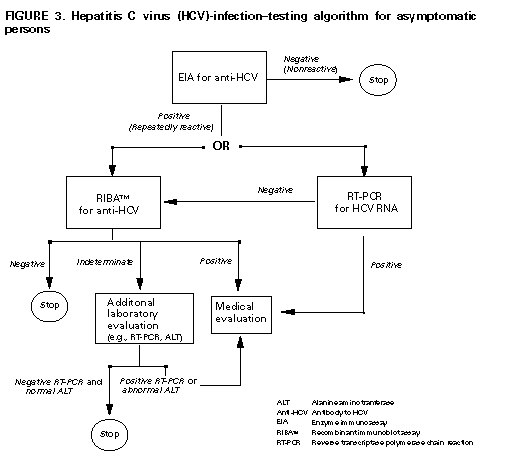Disclosure Policies In Correctional Facilities
Any individual who believes that his or her employment rights have been violated may file a charge of discrimination with the Federal Equal Employment Opportunity Commission . In addition, an individual, an organization, or an agency may file a charge on behalf of another person in order to protect the aggrieved person’s identity.
For more information, see EEOCâs The ADA: Your Employment Rights as an Individual With a Disability.
What Are The Symptoms Of Hiv
HIV has three notable phases, a primary stage which is shortly after infection. During the early stages of HIV, the signs and symptoms are vague. They are often misunderstood as warning signs for other common ailments. Some signs and symptoms of HIV during the early stages include:
- Some rashes appearing on the skin
- Fever and sore throat
- Joint and muscle pain
- Swelling of the lymph nodes.
As the Disease Progresses, Some Other Major Signs and Symptoms May become Noticeable. They may Include
- Extreme and unintended weight loss
- Swelling of lymph nodes lasting for weeks
- White spots appear in mouth and tongue
Retesting For Those Who Remain At High Risk Of Hiv Acquisition
People who are diagnosed HIV-negative but remain at high risk, such as some people from key populations, may benefit from regular retesting. Retesting gives these people both the opportunity to ensure early HIV diagnosis and to receive ongoing health education on HIV prevention. WHO recommends that people in high-risk categories retest at least annually .
Don’t Miss: What Is Pep In Hiv
New Cdc Guidelines: Potential Legal Hurdles And Pitfalls
Reactive, unrefined application of the new CDC guidelines could trigger a range of legal claims . Institutional patterns of HIV testing without linkage to care, as well as evidence of racial disparities in linkages to care for those who test positive, could provide the basis for a disability or race-based discrimination claim. Moreover, amending state law is a protracted process and could result in dilution of important confidentiality protections.
Potential legal hurdles and pitfalls of a literal application of the new CDC guidelines.
Without proof of patient consent, health care providers could face liability regarding claims of failure to get informed consent for patients whose general capacity to provide consent may be in question, such as adolescents, emergency department patients, immigrants, and people with language barriers .
An abridged pretest counseling and consent process can reinforce a claim of medical malpractice. For individuals who have experienced negative consequences as a result of a positive or false-positive HIV test, an inadequate explanation of the testits purpose, benefits, limitations, and emotional and legal consequences and the meaning and medical significance of a positive and negative test resultcan result in successful malpractice claims. Inadequate physician communication is one of the most common factors in patients’ decisions to file claims against their doctors .
History Of Hiv Testing In The United States

In 1985, the United States Food and Drug Administration licensed the first HIV antibody test for detection of HIV. Two years later, in 1987, the United States Public Health Service issued recommendations for HIV testing of individuals with a high risk of acquiring HIV, mainly persons with a history of sexually transmitted infections and those who inject drugs the 1987 recommendations included information regarding counseling, consent, and confidentiality. The 1987 HIV testing recommendations were broadened in 1993 to include HIV testing of hospitalized patients, persons seen in acute care, and persons in emergency room settings. Based on data that emerged showing antiretroviral therapy given to pregnant women with HIV markedly reduced perinatal HIV transmission, the CDC expanded HIV testing guidelines in 2001 and recommended routine HIV testing of all pregnant women. In 2003, the CDC shifted from high-risk HIV testing to a new strategy of making HIV testing a routine part of medical care. The 2003 recommendations served as a transition to the 2006 CDC recommendations to perform routine HIV screening for all persons 13 through 64 years of age in all health care settings. Despite the 2006 recommendations, the CDC estimates that from 2006 through 2016 only 39.6% of noninstitutionalized adults in the United States had ever undergone a test for HIV.
Also Check: How Long Does Hiv Last
Tests For Hiv Diagnosis Preparation Procedure Results
Tests for HIV diagnosis look for the presence of the virus itself, or the antibodies produced to fight the virus. The difference between HIV and STD is minimal. HIV is a type of Sexually Transmitted Disease. It affects your bodys primary form of defence which is white blood cells.
HIV targets CD4+ cells that are vital for immune resistance. When the number of CD4+ cells in your body becomes too low, the body cannot effectively combat illness or bacteria.
Factors That Increase Risk For Hiv Infection
Sexually active but no history of being tested for HIV.
Use of shared drug equipment with a partner whose HIV status is unknown.
Multiple and/or anonymous sexual partnering.
For men, a history of sex with other men.
Diagnosis of other STI, hepatitis B or C.
Sexual activity, sharing of drug-use equipment, or receipt of blood or blood products for people originating from, or who have travelled to, regions where HIV is endemic.
Receipt of blood or blood products in Canada prior to November 1985.
You May Like: How Long After Hiv Infection Do Symptoms Appear
Case Exampleadhara Hiv/aids Association Spain
In Seville a community-based outreach programme of the Adhara HIV/AIDS Association makes sure that the partner of someone testing HIV-positive is promptly linked to a consultation with an HIV specialist. They have compared this strategy with voluntary HIV testing at community centres and found that the number of newly diagnosed HIV-positive cases at the detached community centre was was lower compared with using the index partner testing strategy.
Learning Objective Performance Indicators
- Explain the rationale for routine HIV screening and identify strategies to overcome potential barriers to routine screening
- Discuss current Centers for Disease Control and Prevention and United States Preventive Services Task Force screening recommendations for HIV-1 and HIV-2 in the United States
Recommended Reading: What Are The Odds Of Contracting Hiv
Services For Those Whose Test Results Are Hiv
An HIV-positive diagnosis is a life-changing event. Before giving HIV-positive test results, the health worker, trained lay provider, or counsellor should keep in mind the 5 Cs of HTS, as recommended by WHO and UNAIDS, in particular correct test results . It is the professional and ethical duty of the person providing the HIV diagnosis to ensure that testing procedures follow WHO-recommended testing strategies as described in .
A diagnosis of HIV infection is a life-changing event. Before giving these results, the provider should keep in mind the 5 Cs of HTS.
Once health workers or lay providers are confident of adherence to all measures to ensure correct test results, they should provide post-test health education and counselling. All post-test counselling should be âclient-centredâ, which means avoiding formulaic messages that are the same for everyone regardless of their personal needs and circumstances. Instead, counselling should always be responsive to and tailored to the unique situation of each individual or couple. Health workers, professional counsellors, social workers and trained lay providers can provide counselling. People with HIV who are trained in counselling may be particularly understanding of the needs and concerns of those who receive an HIV-positive diagnosis.
Can You Ask An Employee To Have A Pre
In South Africa, unless it can be shown that a job applicants medical status could affect an inherent job requirement, pre- and post- employment testing for any medical condition is specifically prohibited by the Basic Conditions of Employment and Employment Equity Acts as being unfair and discriminatory. Unlike in previous years, the definition of employees includes job applicants, in as much as every person must be treated equally when applying for a job . Section 6 of the Employment Equity Act states that No person may unfairly discriminate, directly or indirectly, against an employee, in any employment policy or practice, on one or more grounds, including … HIV status … This section applies to all employers and employees. Notably, the omission of the word ‘positive’ from the phrase ‘HIV status’ means that discrimination on the grounds of an employee’s perceived HIV status is also prohibited. Therefore it is not a prerequisite that an employee be HIV positive before he can succeed with a claim of unfair discrimination on the grounds of his or her ‘HIV status’. Section 7 of the EEA states that ‘testing of an employee to determine that employee’s HIV status is prohibited unless such testing is determined to be justifiable by the Labour Court’.
Don’t Miss: How Do Hiv Antiviral Drugs Work
Goals Of Routine Screening
Identifying persons with HIV is the first step in the HIV care continuum. The primary desired outcomes associated with routine HIV screening are two-fold: improve survival and quality of life for the person with HIV, and prevent the person with HIV from transmitting HIV to others . Persons who have acquired HIV, but have not yet been diagnosed, will not obtain the benefits of modern antiretroviral therapy while they remain undiagnosed.
How To Prepare For Hiv Diagnosis Tests

The testing for Human Immunodeficiency Virus is simple. There is not much to prepare for. You only need to visit any professional healthcare facility and get tested. Factors that you can consider are
- Scheduling an appointment
- Attending a pre testing seminar or guidance and counselling sessions
- You may have a friend or close relative accompany you
Don’t Miss: Natural Sleep Aids That Work
Can An Ohcw Who Is Hiv Positive Continue To Treat Patients
The labor law clearly states that as long as a person is not physically ill, there is no reason for an employer to discontinue, reduce or alter the employees duties whatsoever. The complication which clearly demarcates this from any other situation is the possibility of infecting a patient. Under normal circumstances there is no, or negligible risk. When procedures require the use of sharp instruments, then the risk increases. It will depend on the kind of action the OHCW intends to take with the patient, which should delineate various forms of treatment that may expose the patient to high or low risk. There are no compelling data to show transmission of HIV infection from a dentist to a patient when the dentist is using barrier technique to include gloves, mask, and a clinical gown. Some patients in a dental office, however, may still remain suspicious of a dental health care provider and the risk of HIV transmission from that provider. The Centers for Disease Control and Prevention and the Florida Health and Rehabilitative Service Department initially dismissed the case in which an HIV-positive dentist, David Acer, had transmitted HIV infection to at least six of his dental patients. In the light of withheld
Services For Those Whose Hiv Status Is Inconclusive Or Test Results Are Not Yet Confirmed
An HIV-inconclusive status means, in high prevalence settings, that the first reactive test result was not confirmed by additional testing using subsequent HIV assays or that, in low prevalence settings, the first two test results were reactive but the third assay was non-reactive . All clients with an HIV-inconclusive status should be encouraged to return in 14 days for additional testing to confirm their diagnosis.
Receiving an HIV-inconclusive status may be confusing and stressful for the individual or couple and may be difficult for the provider to explain. As with many other tests for medical conditions, resolving the discrepancy with a third test is not useful, given the high probability that it may equally produce a false-reactive result. Most, if not all, HIV-inconclusive statuses can be resolved with retesting 14 days later. Clients with an HIV-inconclusive status should be told that a definitive diagnosis cannot be provided that day and that immediate referral to HIV care or ART initiation is not appropriate. They should be given a clear plan for follow-up testing.
Also Check: How Long It Take For Hiv Test Results
Key Messages About Linkages And Connections To Prevention Treatment And Care
- There appear to be good practices that support linkage to prevention, treatment and care . However, evidence is limited.
- All people who test HIV-positive need immediate linkage to care to maximize the benefits of ART.
- Special efforts will be needed to link people who have a reactive test result in a community setting to facility-based services for additional testing and an HIV diagnosis. For those diagnosed HIV-positive, retesting to verify diagnosis is critical before care or treatment is initiated.
- People diagnosed HIV-positive and those testing HIV-negative with ongoing HIV risk need to be linked to prevention services.
- National policies and strategic planning are needed to improve access to and uptake of HIV testing as well as linkage from testing to prevention, treatment and care.
Counseling And Testing Procedures
In one study of individuals with high risk for acquiring HIV at a sexually transmitted diseases clinic, a needle exchange, and three sex venues for men who have sex with men, participants reported a dislike of counseling, anxiety waiting for results, and venipuncture as reasons to avoid HIV testing. Rapid testing platforms, alternative testing methods, such as oral fluid HIV testing, and the elimination of required written consent and pretest counseling may alleviate some of these concerns. One study performed in San Francisco showed that elimination of the requirement for written consent resulted in significant and sustained increases in HIV testing rates. Home-based testing kits, which do not require counseling, are also now available, though this method of testing has thus far had minimal impact on testing behavior of persons at high risk for acquiring HIV this may be due to lack of awareness of home testing kits as well as to concerns about the cost of the kits and home testing procedures.
Also Check: Can You Get Hiv From Blood On Intact Skin
Goals Of Partner Services
The CDC notes that HIV partner services has three goals:
Confidentiality And Hiv Testing
Concerns about confidentiality discourage many people from getting tested for HIV. Among stigmatized groups such as MSM and trans peopleespecially Black trans womenthose fears are compounded by the fact they may be forced to come out about their sexuality and/or gender identity. For some, these “secondary disclosures” are more distressing than the fact they have HIV.
Recommended Reading: Us Aids Deaths By Year
How Do Hiv Tests Work
There are two basic ways to get HIV test results:
Laboratory tests. For these tests, a technician takes a sample of your blood and tests it. Youâll get results within a few days.
Rapid tests. These tests provide results in about 20-30 minutes. You can get them done in a community clinic or take them at home.
Hiv Testing In A Health Care Setting Or Lab

If you take a test in a health care setting or a lab, a health care provider or lab technician will take a sample of your blood or oral fluid. If its a rapid test , you may be able to wait for the results, but if its a laboratory test, it can take several days for your results to be available. Your health care provider or counselor may talk with you about your risk factors, answer any questions you might have, and discuss next steps with you, especially if your rapid test result is positive.
- If the test comes back negative, and you havent had an exposure during the window period for the test you took, you can be confident you dont have HIV.
- If your HIV test result is positive, the lab will conduct follow-up testing, usually on the same sample as the first.
You May Like: How Long Hiv Positive Person Can Live
Hiv Testing Types And Lab Technologies
This chapter provides information regarding available testing technologies, approaches to testing and interpretation of results. There are many different types of HIV screening tests that are licensed for use in Canada and can vary by jurisdiction. For questions or information specific to your province or territory please contact your local Public Health laboratory.
Case Examplestest Treat And Retain Continuum Of Care And Assessment Tool In The Eastern Mediterranean
In an effort to improve linkage to services, the WHO Regional Office for the Eastern Mediterranean developed a tool to assess the barriers to HIV testing, treatment and care. As a result of this assessment, Egypt, Iran, Pakistan and Sudan all were able to identify programmatic weaknesses that caused poor linkage rates.
- In Egypt the assessment identified client factors as the key barriers to linking to HIV treatment. Clients fear disclosure and lack of confidentiality along the continuum of care.
- In Iran the assessment showed that loss to follow-up is highest among people who inject drugs 62% of people who inject drugs who had an initial reactive RDT did not link to laboratory-based confirmatory testing.
- In Pakistan also, it was difficult to link people who inject drugs to confirmatory testing and, as appropriate, to HIV care and treatment. In fact, many people who inject drugs in Pakistan refused services, often due to fear of stigma and discrimination.
- In Sudan efforts are underway to improve linkage to care from outreach mobile testing, which has had poor linkage rates, by introducing peer navigators to help and support clients in linking to services.
Don’t Miss: How Long For Hiv Blood Test Results